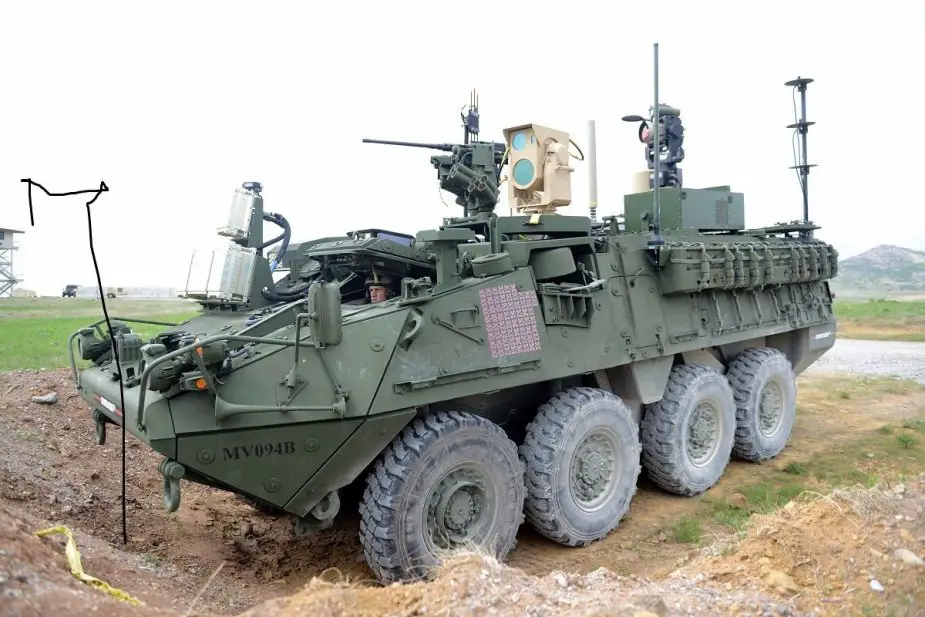New capabilities, rotations to bolster U.S. Army presence in Eastern Europe
Ongoing efforts to cut acquisition timelines will get new capabilities out sooner to counter near-peer threats in Eastern Europe, Army leaders told lawmakers, May 1. Sean Kimmons, Army News Service, explains.

ZAGAN, Poland – M1A2 Abrams tanks belonging to 1st Bn, 66th Armored Rgt, 3rd Armored Bde, 4th Inf Div., loaded onto flatcars (Picture source: U.S. Army)
One measure of success is that it now only takes three to five months to get a requirement approved compared to three to five years in the past. "We're carrying on this process to make sure that we are moving at the speed of relevance to get capability to our soldiers," said Gen. John Murray, commander of Army Futures Command.
Cross-functional teams under AFC, which stood up last year to oversee modernization priorities, allow requirements and acquisition experts to work more closely than before. "I like to describe Army Futures Command as a startup trying to manage a merger right now," Murray said before the House Armed Services Committee's subcommittee on tactical air and land forces.
Anti-access / area denial
The U.S Army currently faces capability gaps against new anti-access/area denial, or A2/AD, technologies. "If you take a look at Eastern Europe, Russians do not want a face-to-face fight with an M1 [Abrams] tank," said Bruce Jette, the Army's acquisition chief. "Therefore, they put a large number of rockets, artillery, mortars and air defenses in place to try and protect those assets." Long-Range Precision Fires has become the Army's top modernization priority to take out those protective measures, he added. Air and missile defense systems, such as directed energy, are also important to counter inbound attacks.
By approving requirements faster, the first Maneuver Short-Range Air Defense systems on Stryker vehicles are on track to be fielded next fiscal year, Murray said. In March, Lt. Gen. James Pasquarette, the Army's deputy chief of staff, G-8, said the vehicles will have four Stinger missiles on one side and two Hellfire missiles on the other, with a 30 mm autocannon and machine gun in the center.

A MEHEL 2.0-equipped Stryker shot small UAS out of the sky using a 5-kW laser (Picture source: C. Todd Lopez/U.S. Army News Service)
The Army also plans to put lasers on Strykers. Soldiers at Fort Sill, Oklahoma, have already been able to take down small unmanned aerial systems with a laser at the 10-kilowatt level. Strykers with 50-kilowatt lasers will take a few more years to develop until they can begin to be fielded in 2024, Pasquarette said. A 100-kilowatt laser on a larger vehicle, called the High Energy Laser Tactical Vehicle Demonstrator, will also be tested against a variety of targets in fiscal 2022. "When you try to shrink all that down and keep a continuous beam, it becomes very difficult," Jette said.
Further, the Rapid Capabilities and Critical Technologies Office, previously called the Rapid Capabilities Office, recently got a three-star general as its director as well as a new mission to focus more on directed energy, hypersonics and space.
Until those technologies can be fielded, the U.S. Army intends to maximize its current force. Hence, the Army plans to increase no-notice deployments to Eastern Europe to test and ensure the rapid capabilities of units deploying to that region. One such deployment occurred in March when over 1,500 Soldiers from the 1st Armored Division's 2nd Brigade Combat Team were given a week's notice to travel from Fort Bliss, Texas, to Germany and fall in on pre-positioned equipment to train in Poland. "[The Army] is working various ways to get after it," Gen. John Murray, commander of Army Futures Command, said. While it may be too heavy, he also believes the Abrams tank is still the most capable tank in the world and will continue to receive upgrades.
The most vulnerable combat vehicle, he said, is the Bradley Fighting Vehicle, which is why the Army chose to replace it first with an Optionally-Manned Fighting Vehicle. In March, a request for proposal for the OMFV was sent out to industry.
Tackling current needs while modernizing for the future battlefield will be a recurring theme for years to come, he said. "The reality is that we have to be ready to do both," Murray said. "We have to be able to fight tomorrow and we have to be ready to fight in the future."


























